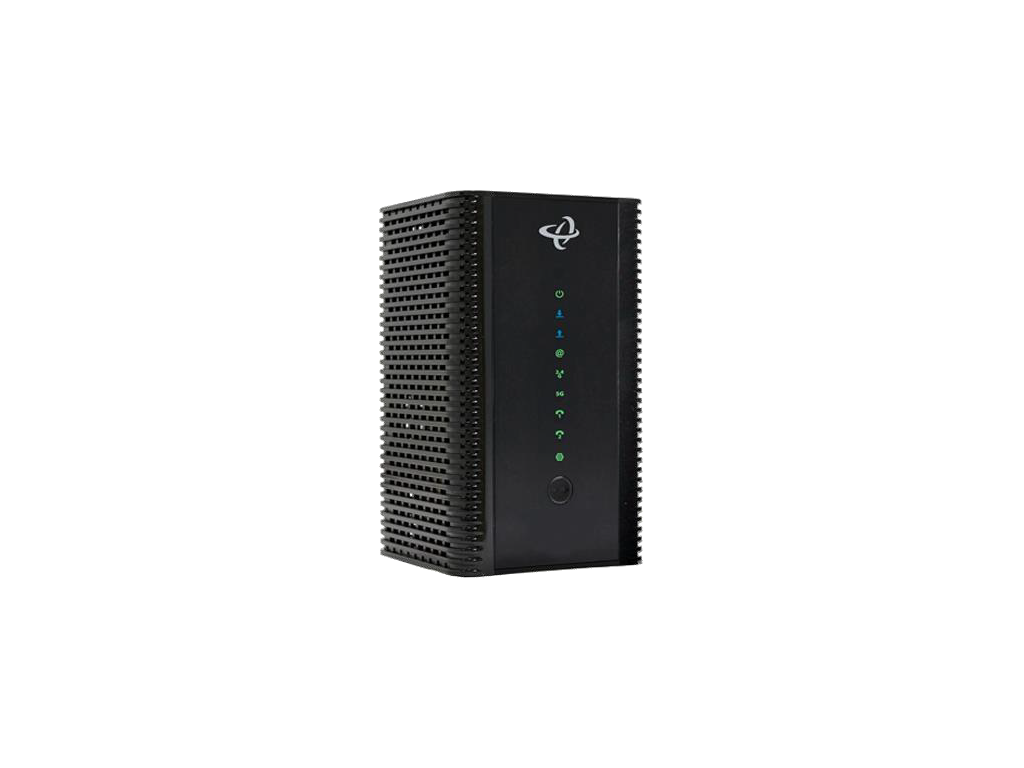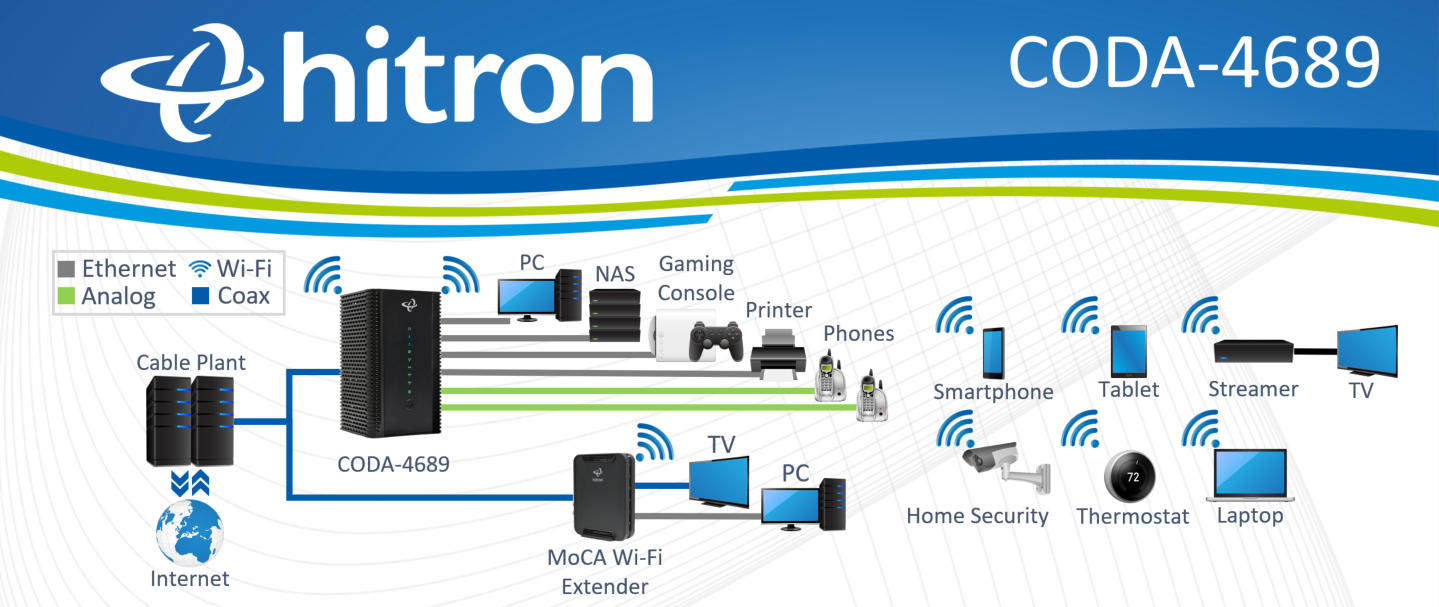Multi-Gigabit DOCSIS 3.1
The CODA-4689 can receive 5 Gbps bidirectional based on 2xOFDM + 32 QAM over its DOCSIS 3.1 interface. This powerful gateway is an ideal solution for your higher tier multi-Gigabit service plans
Ready for 85MHz Returns
With a software switchable 5-42MHz / 5-85MHz return path, the CODA-4689 can seamlessly support tomorrow’s migration to a mid-split (5-85MHz) return path, enabling you to cost-effectively upgrade customers to higher-tier upstream speeds at any time.
Blazing Fast 802.11ac Wave 2
DOCSIS 3.1 deployments require a high-performance home network. The CODA-4689 is built to give your customers the wireless speeds and coverage they need. It supports 4×4 5 GHz 802.11ac Wave 2 dual-band concurrent MU-MIMO and 3×3 2.4 GHz 802.11n access point for enhanced coverage, fast speeds and rock solid reliability.
Compatible with DOCSIS 3.0
The CODA-4689 supports DOCSIS 3.0 32 bonded downstream and 8 bonded upstream channels. That means you can deploy it today on your current DOCSIS 3.0 networks; you won’t need to swap out customer hardware when you upgrade to DOCSIS 3.1.
Better WiFi with Bonded MoCA 2.0
Integrated bonded MoCA 2.0 delivers a near-Gigabit wired backbone over the home’s coax wiring, enabling homeowners to get a strong reliable network in every corner of the home. Hitron’s AutoSync software seamlessly pairs the gateway with a MoCA extender.
Integrated Telephony Support
With two integrated HD telephone ports, you can meet all your subscriber’s connectivity needs.
Easy to Set Up and Manage
The CODA-4689 is designed for ease of use. A built-in TFTP client obtains the IP address and configuration data from the network server automatically, so a few simple connections are all that’s needed to get it up and running. WiFi security is pre-configured and pre-enabled thanks to WiFi Protected Setup (WPS). And providers get complete remote control and management via SNMP, TR-069 and HNAP.
Key Specifications
- DOCSIS 3.1 compliant
- DOCSIS 3.1 2×2 multi-carrier OFDM
- DOCSIS 3.0 32×8 channel bonding
- Switchable 5-42/5-85MHz Upstream
- Wi-Fi 3×3 2.4 GHz 802.11n and 4×4 5 GHz 802.11ac Wave 2 dual band MU-MIMO
- MoCA 2.0 Channel Bonding for highest performance
- One USB 3.0 host, supporting Network Attached Storage (NAS) functionality
- Integrated DLNA Media Server with support for video, audio and image serving
- 2 HD voice ports with SIP or MGCP support
- Battery backup (BBU
- Extensive operator control via configuration file and SNMP
- TR-069 and HNAP for easy setup and remote management
Learn More about Cable Modems & Routers
Why Your Modem Keeps Resetting and How to Fix It
Your modem is the gateway to your Internet connection — so when it starts resetting on its own, it can disrupt everything from video calls to streaming and online gaming. If your modem keeps resetting, there are several potential reasons, and understanding them can...
What Are Modems Used For? A Beginner’s Guide to How Internet Connections Work
Modems are used to connect your home to the Internet by translating signals from your Internet Service Provider (ISP) into digital data your devices can understand. If you use Internet, a modem is essential for bringing that connection into your home. Without a modem,...
Modem Basics: What It Is, How It Works, and Why You Need One
A modem is the essential device that connects your home to the Internet. It receives signals from your Internet Service Provider (ISP)—whether through cable, DSL, fiber, or cellular—and converts them into digital data your devices can use. One common example is the...
DOCSIS 4.0 Cable Modems: What You Need to Know Before Buying
DOCSIS 4.0 Is the Next Generation of Cable Modem Technology DOCSIS 4.0 represents a major leap in cable broadband performance. If you're researching what it means for your home Internet setup—or considering when to upgrade—this guide covers everything you need to...
What is an Internet Modem? (Simple Guide to How They Work)
An internet modem is the device that connects your home to your Internet Service Provider (ISP). It translates the signal from your ISP into a form your devices can use, allowing you to access the Internet. Without a modem, you wouldn’t be able to get online. ...

